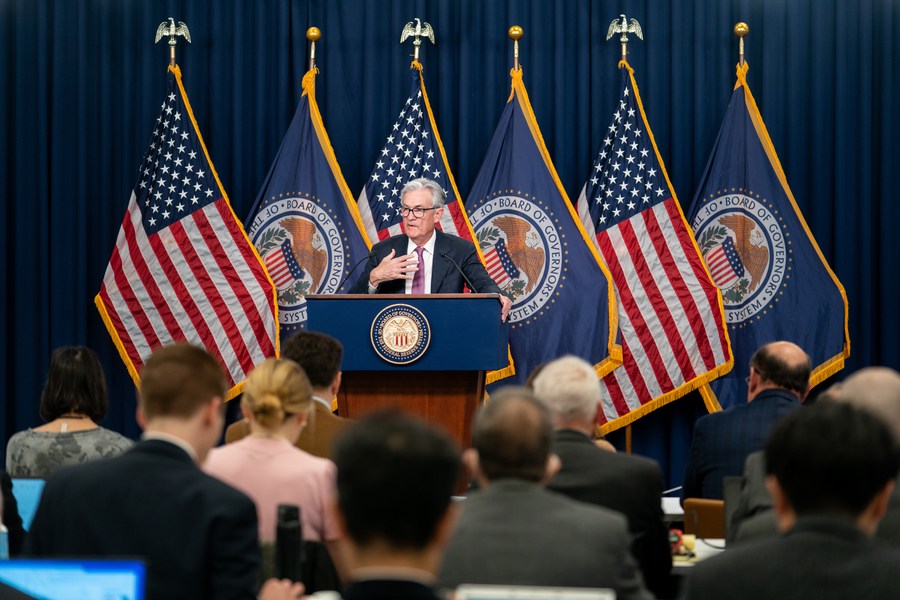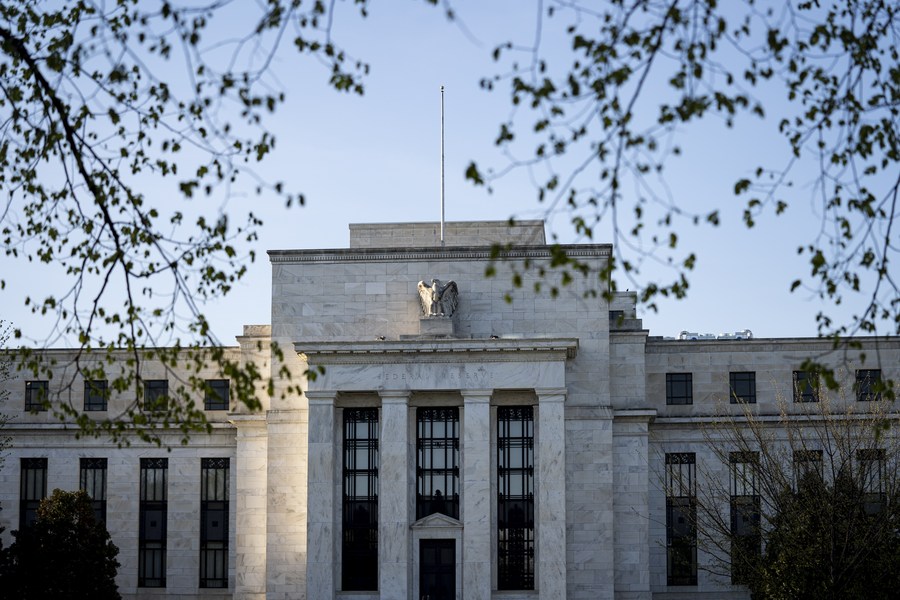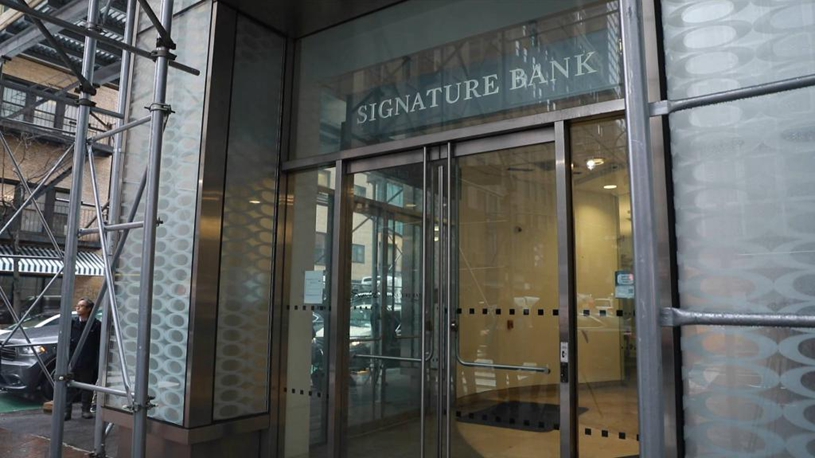
People queue up outside the headquarters of the Silicon Valley Bank (SVB) in Santa Clara, California, the United States, March 13, 2023. (Photo by Li Jianguo/Xinhua)
The U.S. Federal Reserve should have started raising rates much earlier, and in much smaller steps, Charles Read, a scholar in economics and history at the University of Cambridge, told Xinhua.
LONDON, March 16 (Xinhua) -- The collapse of Silicon Valley Bank (SVB), once the 16th largest bank in the United States, has "shaken confidence in U.S. banking" as concerns have mounted over bank deposits, an expert has said.
The tech-heavy SVB's demise has "made people far more likely to worry about their bank deposits, and any rumors will be acted upon ... faster. I think that's a big risk," Charles Read, a scholar in economics and history at the University of Cambridge told Xinhua on Tuesday.
Read said that since the 2008 global financial crisis, people were no longer as trusting of the banking sector, and bank runs would therefore happen more rapidly.
Technology has also made it easier to take money out of banks online, and people will do this whenever they are worried, explained Read.
SVB was shut down by U.S. regulators on Friday after the lender reported massive losses from securities sales, triggering a run on the bank's deposits. It was the second-largest bank failure in U.S. history, and was quickly followed by the closure of cryptocurrency sector lender Signature Bank on Sunday.
Read told Xinhua that the underlying reason for the collapse of SVB was rising interest rates. The U.S. Federal Reserve has aggressively raised rates in the past year, in a bid to curb rampant inflation.
Rate hikes have put significant pressure on the global financial system, said Read.

U.S. Federal Reserve Chair Jerome Powell (Rear) attends a press conference in Washington, D.C., the United States, on Feb. 1, 2023. (Xinhua/Liu Jie)
"Banks can struggle when interest rates go up," he explained. "If interest rates go up, it becomes more expensive for them to attract deposits ... It also weakens the creditworthiness of the people they've lent money to. So they find it harder to service their debts when interest rates go up."
While this is usually quite a slow process, SVB was hit hard when short-term rates rose above long-term ones, according to Read. SVB found itself suddenly in trouble after borrowing in the short-term and lending in the long-term.
The banks borrowed from depositors who tended to have their money in the bank on short-term deposit, and then invested the deposit in what they thought was a safe asset, mainly U.S. government bonds and mortgage assets, he said.
In his new book about the relationship between monetary policy and financial crises in Britain over the past two centuries, Read writes that rapid rises in interest rates have historically led to bank failures.
These days, policymakers mainly think of monetary policy in relation to inflation, without considering its impact on financial stability. This has contributed to crises in the West, and again central bankers are facing the same issues, said Read.
The U.S. Federal Reserve should have started raising rates much earlier, and in much smaller steps, according to Read. "Banks and businesses can get used to interest rates when they rise gently, but not if they rise too fast. And that is the lesson from British banking history over the past 200 years."
The main systemic risk currently facing the U.S. economy is "still the impact ... of the rapid rise in interest rates over the past twelve months hitting the sector," he said.
Many banks have not declared the losses they have made on bond portfolios, and the impact of the higher cost for banks to fund themselves has yet to fully filter through the system, said Read. "So I think we will have more turbulence in banking and finance in America and beyond in the weeks and months to come."

Photo taken on April 20, 2022 shows the U.S. Federal Reserve in Washington, D.C., the United States. (Xinhua/Liu Jie)■












